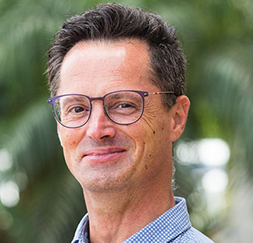Linnaeus Bioscience can perform several assays against a variety of bacterial and fungal organisms.
We have hundreds of common clinical reference strains as well as multidrug resistant clinical isolates available for testing. Contact us for more details.
Antibiotic kill curve/Time-kill kinetics assay
The rate at which an antimicrobial compound kills a microorganism can be measured using the antibiotic kill curve, also known as the time-kill kinetic assay.
In this assay, samples are added to a microbial culture and the number of viable cells remaining over time is measured. This standard assay is used to characterize all antimicrobial agents and is used to study both antibiotics and antiseptics.


Antimicrobial synergy assay
“Checkerboard testing” is used to determine if the activity of two antibiotics combined together are synergistic, meaning they are significantly more active than the additive effect of each antibiotic. By serially diluting two antibiotics along the rows and columns of a multi-well plate, you ensure each well has a unique combination of the two agents. By inoculating this plate and checking for growth you can calculate the Fractional Inhibitory Concentration (FIC). The resulting FIC index is used to determine synergy, additivity (no interaction) or antagonism.
Cellular bioenergetic measurements in microbes
Many compounds affect cellular bioenergetics and decrease intracellular ATP levels. Linnaeus Bioscience offers assays to determine if intracellular ATP levels are affected by compounds in a dose and time dependent manner. This assay can be performed in live E. coli, P. aeruginosa and S. aureus cells expressing luciferase, which utilizes cellular ATP to luminesce. Compounds are added to cells and changes in luminescence are monitored over time, providing information on the kinetics of ATP depletion. If treatment with a compound compromises ATP production, this will cause a reduction in light production by luciferase.
This assay can also be performed in most bacterial or fungal cells that do not express luciferase by measuring the amount ATP released from cells after lysis. Compounds are added to cells and after various amounts of time, lysed and the relative levels of ATP measured. We routinely employ this assay for E. coli, P. aeruginosa, A. baumannii, and K. pneumoniae, mycobacteria including M. abscessus, M. avium, M. tuberculosis, and fungal cells including C. albicans and C. neoformans.


Biofilm eradication assay
Many antibiotics are ineffective against bacterial biofilms. Compounds with potent activity against biofilms can be an important differentiator. We offer assays to determine if compounds are effective at eradicating established biofilms. In this assay (modified from O’Toole (2011) we first generate established biofilms of the target bacteria in 96-well plates and then treat with different concentrations of compound (e.g. 1X, 2X, 5X, 10X, and 20X MIC) or a solvent control for various amounts of time (e.g. 4, 8, and 24hrs). Wells are washed to remove non-adherent cells before staining with crystal violet to determine how much biofilm remains after treatment.
Antibiotic resistance studies
Spontaneous resistance mutation frequency
Determining the frequency at which bacteria develop resistance to a new antibiotic is a critical step in antibiotic discovery programs. This frequency can be determined by measuring the number of mutants that exist within a population of bacteria by selecting for growth on a petri plates in the presence of the antimicrobial agent.
Isolating and characterizing resistant mutants
Resistant mutants that arise on plates containing an antimicrobial compound can be purified and further characterized by 1) determining the MICs of the compound used for selection. This can verify that mutants are actually resistant to the compound and determine the level of resistance; 2) sequencing their genomes to identify the mutations that are likely responsible for resistance. For some molecules with very low resistance frequencies we may need to serially passage cells in which we grow them in subMIC doses of compound and then dilute them into new media containing slightly higher doses to select for resistant mutants over many passages in a stepwise fashion.











